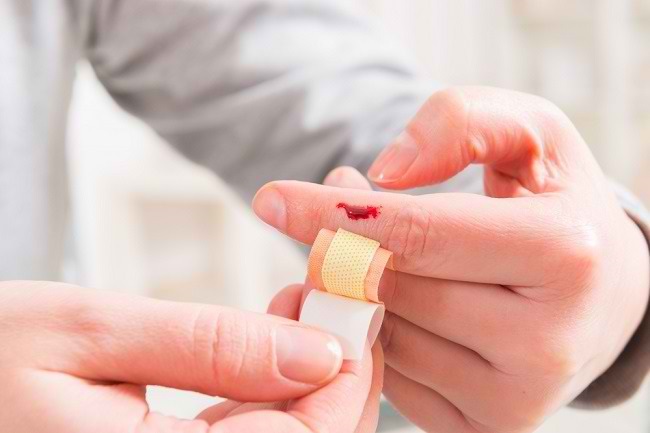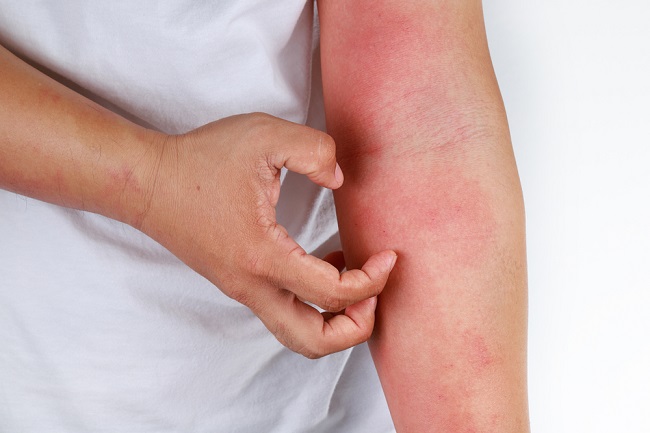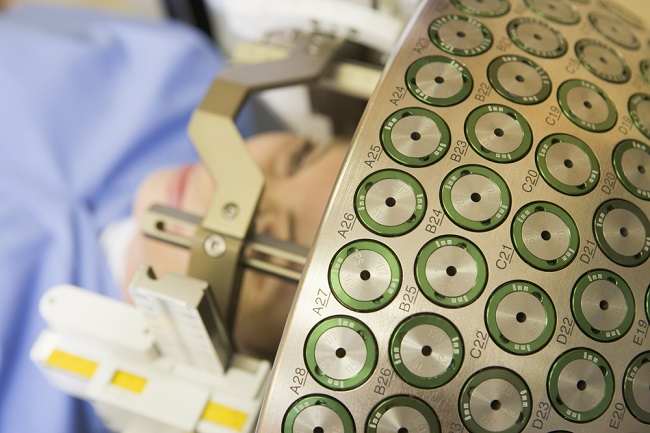Gemcitabine is a chemotherapy drug to treat several types of cancer, such as ovarian cancer, breast cancer, non-small cell lung cancer, or pancreatic cancer.
This drug works by triggering the death of cancer cells. That way, the growth and development of cancer can be slowed or stopped. Gemcitabine will be administered in the hospital by a doctor or medical personnel under the supervision of a doctor.

gemcitabine trademark: DBL Gemcitabine, Fonkogem, Gapoly, Gemcikal, Gemcitabine HCL, Gemhope, Gemtan, Gemtero, Getanosan, Gemzar, Kabigeta
What is Gemcitabine
| group | Prescription drugs |
| Category | Chemotherapy drugs |
| Benefit | Treat ovarian cancer, lung cancer, pancreatic cancer, or breast cancer |
| Used by | Mature |
| Gemcitabine for Pregnant and Breastfeeding Mothers | Category D: There is positive evidence of risks to the human fetus, but the benefits may outweigh the risks, for example in dealing with life-threatening situations. Gemcitabine is not known whether or not it is absorbed into breast milk. If you are breastfeeding, do not use this medicine without consulting your doctor. |
| Medicine Form | Injection powder for infusion |
Precautions Before Using Gemcitabine
Gemcitabine will be given by a doctor at the hospital. There are several things you should pay attention to before using gemcitabine, namely:
- Tell your doctor about any allergies you have. Gemcitabine should not be given to patients who are allergic to this drug.
- Tell your doctor if you have alcoholism, kidney disease, liver disease, or heart disease, such as an irregular heartbeat or heart failure.
- Tell your doctor if you have or are currently having radiotherapy.
- Tell your doctor if you are taking any other medicines, including supplements or herbal products.
- Tell your doctor that you are being treated with gemcitabine before undergoing certain medical procedures or surgery.
- Tell your doctor if you are pregnant, breastfeeding, or planning a pregnancy. This medicine should not be used by pregnant women or nursing mothers. Use effective contraception during treatment with gemcitabine for up to 6 months after the last dose.
- As much as possible, avoid close contact with people with infectious diseases that are easily contagious, such as the flu, while undergoing treatment with gemcitabine, because it can increase your risk of contracting it.
- Talk to your doctor if you plan to vaccinate while on treatment with gemcitabine.
- Do not do things that require alertness, such as driving a vehicle after using this medicine. This medicine may cause drowsiness and dizziness.
- See your doctor right away if you have an allergic drug reaction, serious side effect, or overdose, after using gemcitabine.
Gemcitabine Dosage and Rules
The dose of gemcitabine given by the doctor depends on the patient's condition, body surface area (LPT), and the patient's body response to therapy. Gemcitabine will be given through an IV into a vein (intravenous / IV).
In general, the following is the dose of gemcitabine according to the condition and body surface area:
Condition: Ovarian cancer
- Treatment combined with carboplatin
The dose is 1,000 mg/m² LPT by infusion over 30 minutes on day 1 and day 8 of a 21-day cycle. The dose can be reduced in each follow-up cycle or depending on the patient's body's response to treatment.
Condition: Non-small cell lung cancer
- Single treatment
The dose is 1,000 mg/m² LPT, once a week by infusion for 30 minutes, administered for 3 weeks followed by a rest period of 1 week.
- Treatment combined with cisplatin
The dose is 1,000 mg/m² LPT, once weekly by infusion over 30 minutes on days 1, 8, and 15 of a 28-day cycle. An alternative dose of 1,250 mg/m²LPT by infusion over 30 minutes on days 1 and 8 of a 21-day cycle.
Condition: Advanced bladder cancer
- Treatment combined with cisplatin
The dose is 1,000 mg/m² LPT by infusion over 30 minutes on days 1, 8, and 15 of a 28-day cycle. The dose can be reduced in each follow-up cycle or depending on the patient's body's response to treatment.
Condition: Pancreatic cancer
- Single treatment
The dose is 1000 mg/m² LPT, once a week, by infusion over 30 minutes. Treatment was carried out for 7 weeks, then followed by a rest period of 1 week. The dose is then given again every 1 week, for 3 consecutive weeks in a 4 week cycle.
Condition: Breast cancer
- Treatment combined with paclitaxel
The dose is 1,250 mg/m²LPT by infusion over 30 minutes on days 1 and 8 of a 21-day cycle. The dose can be reduced in each follow-up cycle or depending on the patient's body's response to treatment. Prior to this therapy, the patient is required to perform a blood test to determine the number of granulocytes.
How to Use Gemcitabine Correctly
Gemcitabine will be given by a doctor or medical officer under the supervision of a doctor. This drug is given by infusion into a vein (intravenous/IV) for more than 30 minutes.
Tell the doctor if there is burning, pain or swelling in the area of the infusion. If this medicine accidentally gets on the skin, clean the area immediately with soap and warm water.
During treatment with gemcitabine, your doctor will ask you to undergo regular blood tests, as well as kidney, liver, and lung tests.
Gemcitabine Interactions with Other Drugs
Some drug interactions that can occur if gemcitabine is used with certain medications are:
- Enhanced anticoagulant effect of warfarin
- Increased risk of developing lung damage when used with bleomycin
- Increased risk of developing infectious disease and decreased vaccine effectiveness when used with live vaccines, such as yellow fever vaccine
Gemcitabine Side Effects and Dangers
The following are some of the side effects that can occur after using gemcitabine:
- Pain or swelling at the injection area
- Nausea and vomiting
- Diarrhea
- Ulcer
- Drowsiness
- Muscle ache
- Hair loss
Tell your doctor if your side effects do not subside or get worse. See your doctor right away if you have an allergic reaction to a medication or a more serious side effect, such as:
- Cough or shortness of breath
- Dizziness, headache, feeling light-headed, or feeling faint
- Swelling in the feet or hands
- Numbness or tingling
- Slow, fast, or irregular heart rate
- Jaundice, stomach pain, or dark urine
- Infrequent urination or very little urine
- Chest pain
- Weakness on one side of the body, severe headache, or slurred speech
- Pale skin, fatigue, sore throat, fever, chills, and easy bruising
- Confusion, mood disturbances, or seizures









